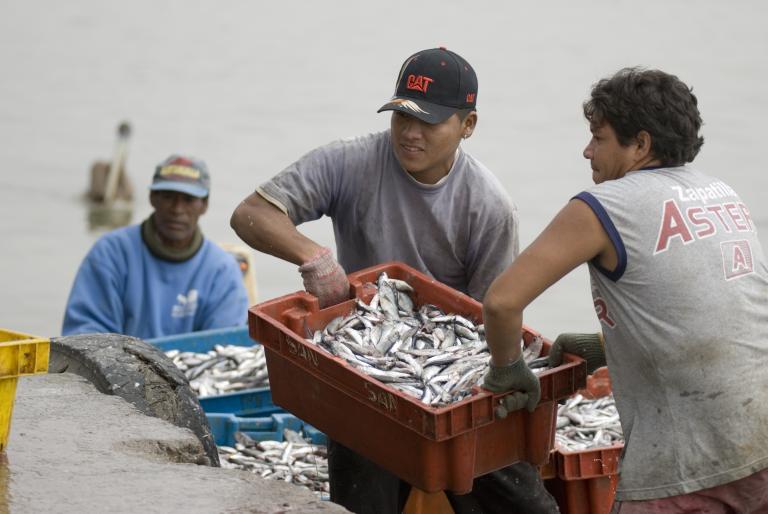

Peruvian Anchoveta Northern-Central Stock Individual Vessel Quota Program
Country: Peru | Start Year: 2009
Two fishing seasons per year help to manage the short-lived stock. Restrictions on transferability help limit consolidation. Each year, a 5 million metric ton reserve of anchoveta biomass is set aside to promote long term stock health.
This program has ended the race to fish and improved economic efficiency in the world’s largest fishery, which reaches up to 8% of global catch by volume in peak years.
Program Summary
The anchoveta fishery has experienced multiple periods of rapid growth and decline since its development in the 1950s. As the international demand for fishmeal and fish oil grew, landings peaked at 12 million metric tons in 1970 and accounted for 20% of global catch. However, continued overfishing led to the collapse of the anchoveta stock in subsequent years.

During the late 1980s through the 1990s, the stock began to rebuild, but this recovery was quickly met with growing fleet capacity. The Peruvian government introduced the General Law of Fisheries in 1992 which required existing vessels to be decommissioned before new vessel construction. Despite the regulation, participants found ways to increase capacity. Into the 21st century, the fishery continued to experience an intense race for fish until reaching a significant turning point in 2009 when the Individual Vessel Quota (IVQ) program was implemented.
Since IVQ implementation, the fishery has been successful in meeting its goals of improving the economic performance of the fishery and stopping derby-style fishing. Product quality has increased due to improved handling and timing of deliveries, resulting in a 37% increase in the average price of anchoveta. The fishery has also seen a reduction in overcapacity with the lengthening of the fishing seasons, allowing fishermen to fish more carefully. As a result, the number of accidents decreased by 28% in the first year of the program and the fishery has achieved catch limit compliance in almost every year since program implementation, with only a tiny overage of less than 0.3% in 2011.
Download full report
| Files | Description | Format | |
|---|---|---|---|
| Catch Shares in Action - Peruvian Anchoveta Northern-Central Stock Individual Vessel Quota Program | Download | ||





